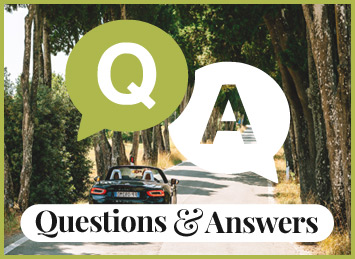Siena is so beautiful and particular to make it not like anywhere else. It’s so special a place that anyone coming to Tuscany shouldn’t miss visiting it.
The city has a very characteristic and appealing historical center, enclosed within its medieval walls, through which traffic is not allowed.
While entering the town, it’s impossible to not be affected by its peaceful and thrilling atmosphere; it’s a bit like entering another world, where life still goes slowly.
Siena is small enough for you to reach every corner of it on foot, so enjoy the pleasure to wander across the incredibly charming alleys and hidden corners of this beautiful Gothic town. If you go for Siena, here is a guideline to Siena’s top attractions.
Siena Travel Guide: What to Visit in Siena, Top Sights
Il Campo is the core of Siena, an amazing and spectacular huge curving square with the strange shape of a shell. You’ll not find a similar square anywhere else, it’s unique and particular, one of the most beautiful squares in the world. I suggest you walk all across the square and stop here and there to admire it and all the beautiful historical buildings surrounding the piazza.
Right at the highest point of the piazza is the beautiful Fonte Gaia, the fountain of joy, carved by Jacopo della Quercia in the 15th century and representing the Virgin surrounded by the Virtues.
It’s a place full of atmosphere, even more evocative and enchanting at night. As it was in the past, il Campo is still the focus of public and daily life, from the city’s marketplace to the Palio horse race.
Twice a year, on July 2nd and August 16th, Piazza del Campo becomes the special setting for the famous Palio of Siena, spectacular horse race between Siena’s different 17 districts, known as contrade. Each contrada has its own name, symbol, church, museum, and fountain; residents are characterized by a strong sense of identity and belonging.
An exciting three laps race lasting just ninety seconds, that literally enchants an immense “madding” crowd. This great Italian event dates back at least to the 13th century, originally the race took place through the town’s streets, and in Piazza del Campo from the 16th century.
The race is held in honour of the Virgin twice a year, but just 10 contrade run the race each time; the 17 contrade run lots to participate, but in the next race the losing districts will take part in the competition.
The day of the Palio, at about 5 pm, a wonderful historical parade takes place through the city streets; medieval costumes, horses, colorful flags, riders, drummers, and pages, makes this festival absolutely charming. Celebrations and parties go on all night in the winning district after the race.

The lowest end of Piazza del Campo is dominated by the dizzy and imposing Torre del Mangia and the majestic Palazzo Pubblico. Climb up the tower’s 400 steps to be rewarded by amazing and outstanding views on all sides. Just at the base of the tower you can admire the Cappella di Piazza, a beautiful stone chapel built at the end of the plague, the Black Death, in 1348.
The beautiful Palazzo Pubblico formerly hosted the headquarters’ of Siena’s council, but today the main rooms are occupied by the Civic Museum. Its walls and ceilings are impressive, decorated with fabulous frescoes and great works of art. The most important are the panels of the Hall of Nine, by Ambrogio Lorenzetti, and the stupendous frescoes by Simone Martini.
The 12th century Cathedral of Siena is simply beautiful, a true Gothic masterpiece in black and white marbles, that really offers a lot to the traveler: from the amazing panorama you enjoy from its unfinished nave to the wonderful mosaic pavement and the superb fresco cycle by Pinturicchio in the Piccolomini Library, to the masterpieces by Duccio and Donatello. You can find a full post dedicated to Siena’s Duomo at this link, while to know more about all the complex of the Duomo, including the Museo dell’Opera del Duomo; here is the official website, where you can also buy tickets online.
Located in the 14th century Palazzo Buonsignori, the Pinacoteca Nazionale of Siena, is a must visit to appreciate the great Sienese art. The first rooms display the works from the origins of Sienese painting until the 2nd half of the 15th century; Duccio di Buoninsegna, Simone Martini, Pietro e Ambrogio Lorenzetti are just some of the most famous artists.
Among the various masterpieces, we find the Madonna dei Francescani by Duccio and La Piccola Maestà di Ambrogio Lorenzetti.
Located in the contrada dell’Oca (goose district) territory and near the beautiful and most ancient fountain of Siena, Fontebranda, Saint Catherine’s sanctuary and birthplace is a spiritual place full of peace.
Saint Catherine, famous for her mystical visions, was born here in 1347. She followed the Dominican order, led an austere life, and struggled against the corruption of the church. Her family home was then transformed into a real sanctuary with a series of oratories, chapels, artworks, as well as records of her life. The head of the saint is preserved in the majestic Church of San Domenico.
For a free entry you can admire wonderful frescoes representing the saint’s life.
Located in front of the Duomo, Santa Maria della Scala was built along the Via Francigena in the 9th century. It was one of the first hospitals in Europe, taking care of pilgrims, and poor and sick people. Today, though works are still in progress, it has been restored as a great museum hosting a wonderful collection of artworks, frescoes, decorated chapels, temporary exhibitions and events.
The museum is a vast complex including the Church of the Santissima Annunziata, the Pilgrim’s Hall or Pellegrinaio, the Old Sacristy, the Chapel of the Virgin, the Archeological Museum, and the Center of Contemporary art.
Have you ever been to Siena? Share your experience with us 🙂
See Also:










